People give flowers to others on many occasions. As a result, this means that some flowers are specifically associated with death. The death of an important individual is always an unforgettable moment, and flowers are a silent way of dampening the blow. Since words often won’t suffice, well-wishers give flowers instead of words. What are 11 flowers that mean death, and are they appropriate to give to those dealing with the aftermath of mortality? We’ll discuss a few choices now and let you decide.
1. Carnation Meaning: A Mother’s Heartache in Death
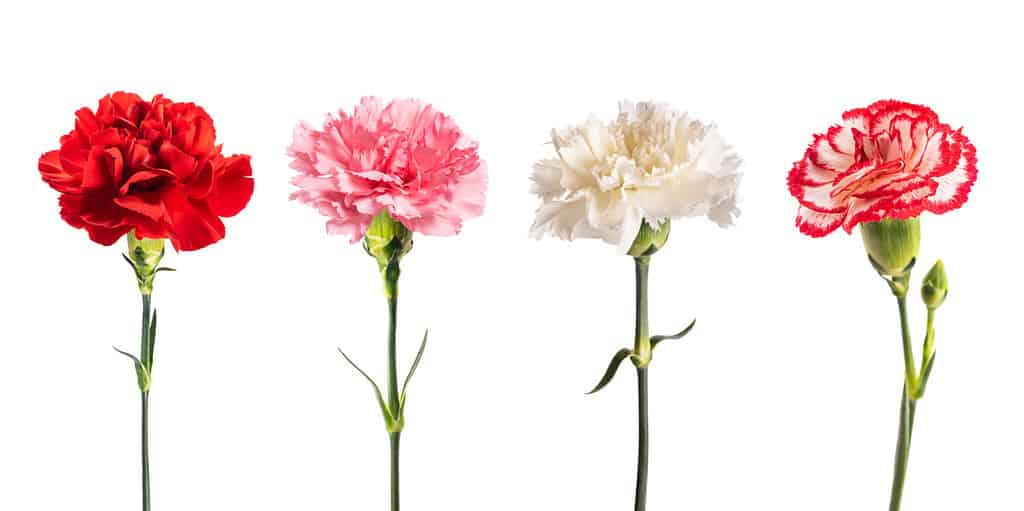
Carnations symbolize a mother’s heartache as they face the death of a child.
©Scisetti Alfio/Shutterstock.com
The carnation is associated with a mother’s love and with heartache. They are a great choice if someone experiences a miscarriage or the death of a child. Pink carnations are the most commonly chosen as they’re associated with remembrance.
Their association with a mother’s loss originates from the Christian crucifixion story. As Mary sat underneath Jesus’s cross, carnations bloomed where her tears hit the ground.
2. Chrysanthemum Meaning in Death: Comfort in Sorrow
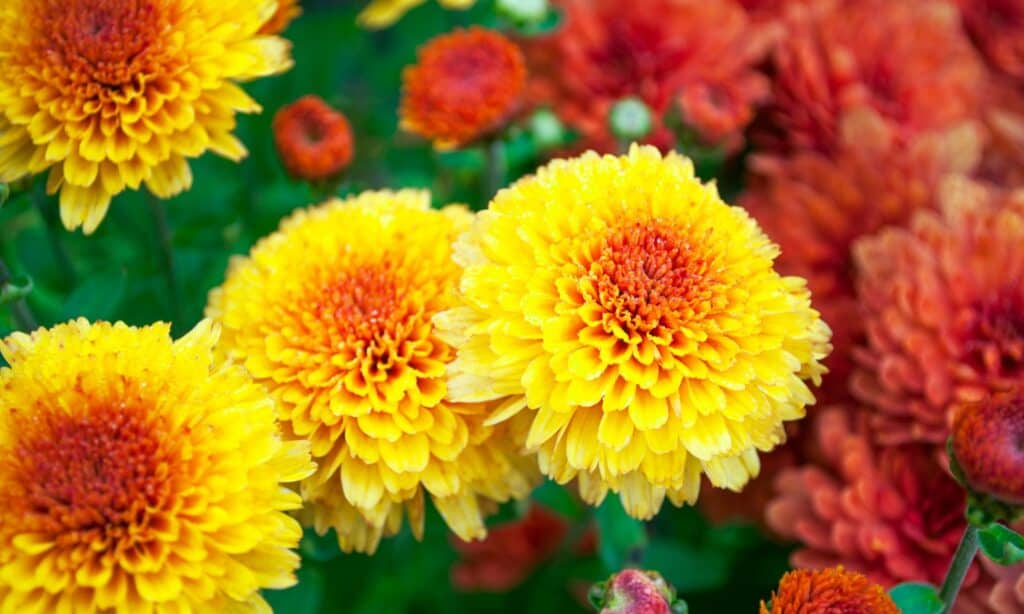
Chrysanthemums express condolences and comfort in sorrow.
©Elan Havrilyuk/Shutterstock.com
Chrysanthemums are a symbol of condolence. Western Europe has a strong tradition of putting these flowers on graves and using them as funerary flowers. This is because they are meant to provide comfort during sorrow.
This association probably started because chrysanthemums bloom in the Fall. Flowers are hard to find in the Fall. As a result, they are common at All Souls’ Day celebrations at the beginning of November. Also, white and yellow varieties are common in Asian cultures as a way of saying goodbye.
3. Cypress Vine Meaning in Death: Love’s Mortality and Mourning

Cypress vines are a symbol of love’s mortality.
©Passakorn Umpornmaha/Shutterstock.com
The cypress vine, also called the hummingbird vine, symbolizes mourning. In Victorian culture, they represented remembering past love or loving in vain. In China, they represent unrequited love.
Today, the flowers on a cypress vine signify love’s mortality and remembrance. The flowers associated with death are the bright red variety. They bloom from late summer through the first frost in Fall.
4. Gladiolus Meaning in Death: Sadness, Remembrance, and Integrity

The gladiolus expresses remembrance, sadness, and a broken heart.
©iStock.com/Olga Niekrasova
The gladiolus is a good flower choice when someone has a broken heart. Another name for this flower is the sword lily because its name comes from the Latin word that means small sword.
This flower is associated with sadness, remembrance, and death. It also often appears in more positive situations that call for symbols of integrity, strength, and honor.
Since they have positive correlations, they work well in the context of death. This is because these are traits that many hope the dead have when facing the afterlife.
5. Goldenrod Meaning in Death: Good Luck in Death and Immortality
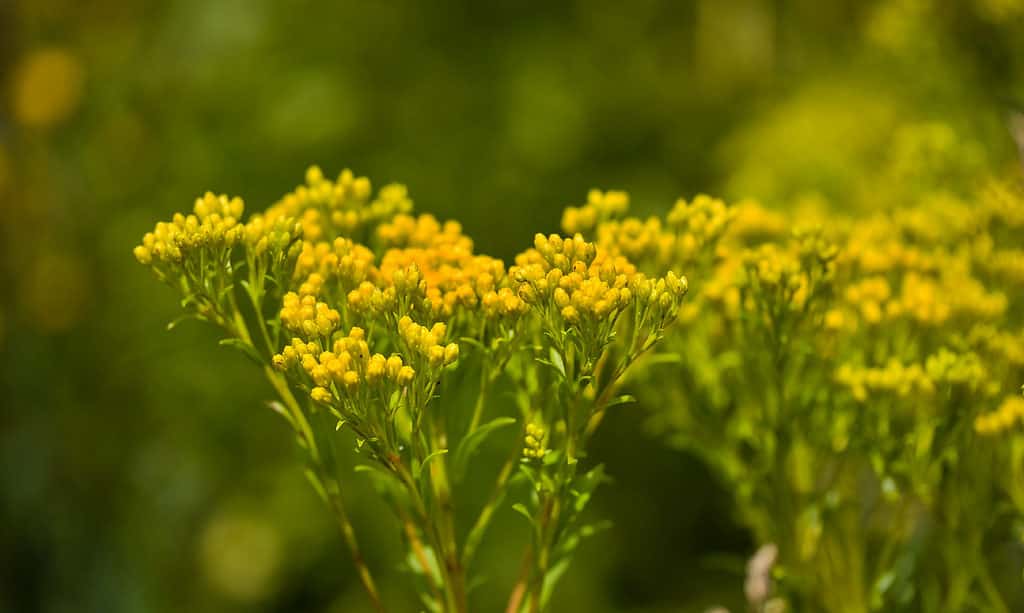
A great filler flower for funerary arrangements is the goldenrod.
©islavicek/Shutterstock.com
Goldenrod is a great filler flower for any arrangement that honors death. In Egypt, it is a symbol of immortality and rebirth.
In American folklore, goldenrod wards off evil spirits. Some cultures believe that gathering wild goldenrod and giving it to someone who is dying bestows good luck on the giver.
As a garden plant, goldenrod means protection, prosperity, and good luck. They bloom in autumn, meaning other plants in their surroundings are dying. In herbal medicine, goldenrods are helpful for pain. Many ailments, including arthritis, headaches, colds, inflammation, and constipation, have historically been called for goldenrod.
6. Marigold Meaning in Death: The Connection Between the Living and the Dead
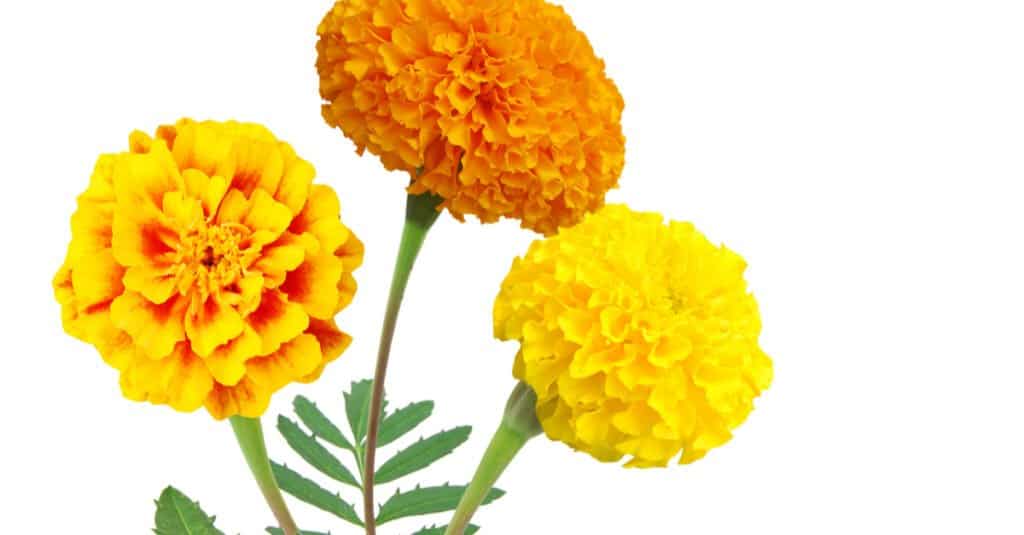
Cultures celebrating the Day of the Dead use marigolds to guide the dead to the living.
©Quang Ho/Shutterstock.com
Marigolds are a symbol of the connection between the dead and the living. They have a strong smell, and many believe their scent draws spirits. Using them is a celebration of what is to come after death.
In some pre-Columbian cultures from Central and South America, marigolds were gifts from the Sun God to honor the dead. This history informs their use during Day of the Dead celebrations. On the Day of the Dead, communities often spread marigold petals from the cemetery to their homes to ensure the departed’s souls make it home.
7. Monkey Orchid Meaning in Death: Evil and Darkness
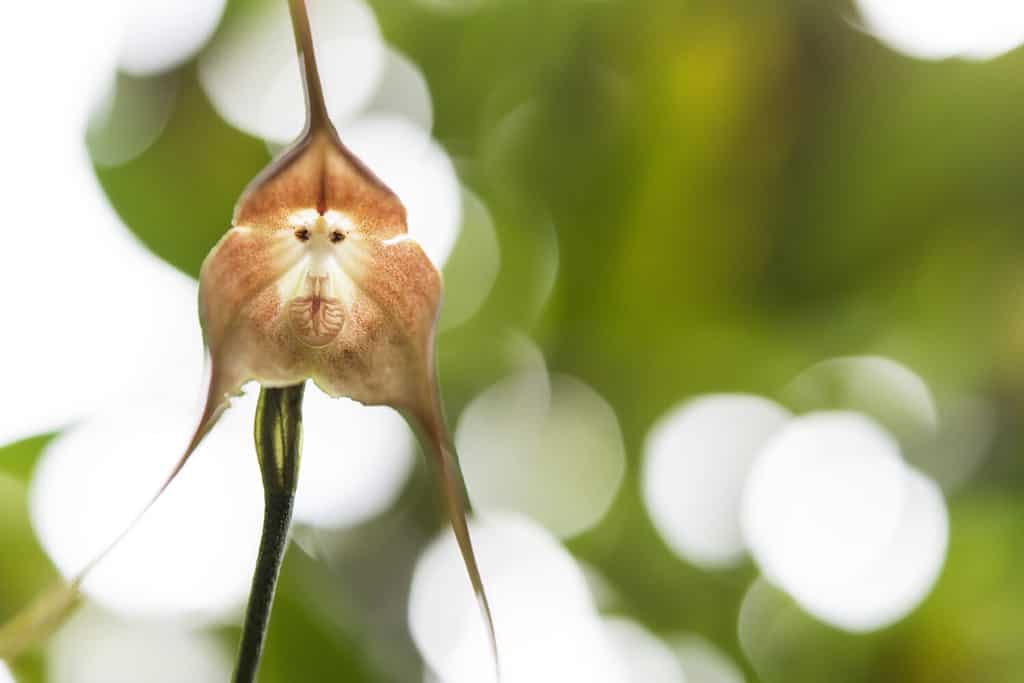
Monkey orchids symbolize evil, darkness, and death.
©cotosa/Shutterstock.com
The monkey orchid symbolizes death as it associates darkness with what comes with evil. They’re a rare flower existing only in the wild cloud forests of Peru, Columbia, and Ecuador.
Long tendrils hanging down from the bottom petals of the flower look like fangs, and their dark coloration looks almost bloodied. As a result of their appearance, they go by the name Dracula Flower.
From a distance, these flowers’ internal spots and stomas often look like monkey faces. However, there is no evolutionary reason for this, nor do monkeys utilize these flowers. This phenomenon is often creepy for observers, which adds to their negative connotations.
8. Poppy Meaning in Death: Peace and Remembrance

Red poppies are a popular choice for the graves of veterans.
©Yuriy Kulik/Shutterstock.com
Poppies are a well-known sedative. This means that they became associated with peace, sleep, and death. Specifically, red poppies represent death.
Red poppies are often used on the graves of veterans. This association originates from a poem written during World War I.
A military surgeon noticed red poppies growing on a war-torn battlefield in the spring. As a result of this poem, red poppies are used by many on Memorial Day as a symbol of peace and remembrance.
9. Red Spider Lily Meaning in Death: The Final Goodbye
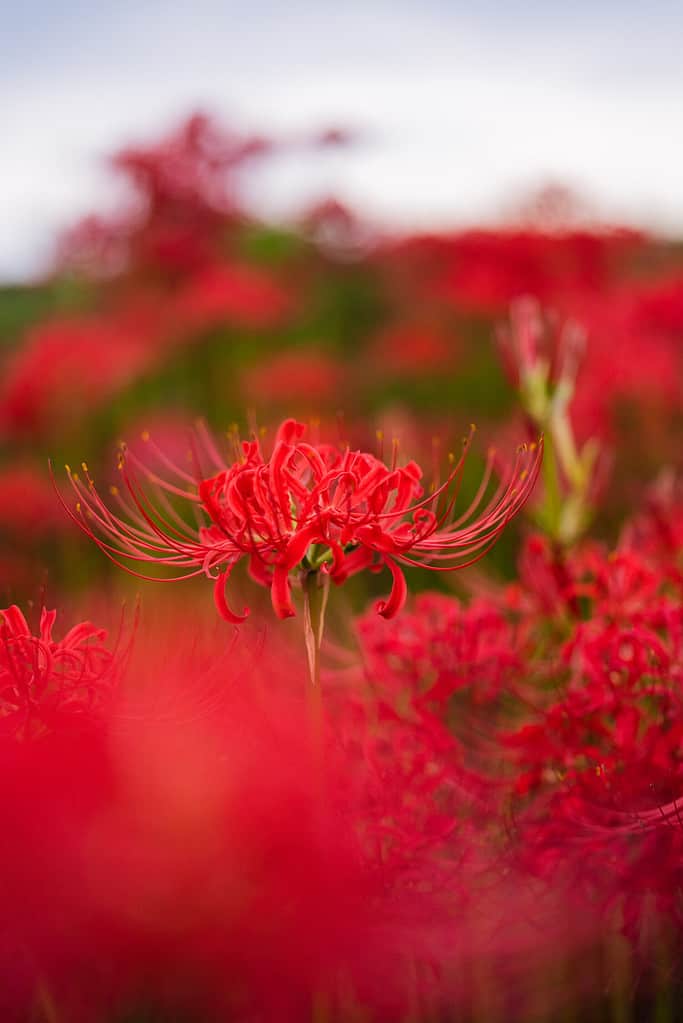
Red spider lilies represent rebirth in different Asian cultures.
©pianoman555/Shutterstock.com
The red spider lily is a popular funerary flower in Asia. In Japan, some Buddhists believe that a soul’s path to Nirvana is lined with red spider lilies. A Japanese legend dictates that these flowers bloom around the graves of abandoned kids.
Throughout different Asian cultures, the red spider lily symbolizes death and rebirth. More specifically, they represent the final goodbye a person experiences when someone important to them passes away.
10. Rosemary Meaning in Death: Remembrance

Rosemary was used extensively at funerals because it was inexpensive.
©Maren Winter/Shutterstock.com
Flowering rosemary became popular as a symbol of death because it was inexpensive. It has been associated with remembrance for a few centuries, as seen in Hamlet by Shakespeare. The character Ophelia identifies rosemary as a flower, meaning remembrance.
There is evidence that rosemary has been a part of burials since pre-history. It was often thrown in graves to help the departed find their way into the next life. Today, it makes an excellent filler in funerary bouquets or as a live plant in cemeteries that allow planting.
11. Wolfsbane Meaning in Death: Danger, Dislike, and Evil

This flower represents evil, danger, and death.
©leskas/iStock via Getty Images
Wolfsbane is poisonous and has long been associated with death. Ancient cultures used the plant on their weapons to make them extra deadly. Victorians saw it as a sign of danger, a warning, and a symbol of a dislike for humanity.
In Ancient Greek mythology, wolfsbane was created by the Cerberus that guards hell’s gates. It sprung up where the dog slobbered on the ground. It’s a common ingredient ascribed to witches in European folklore. Because they were related to witches, this also associated them with evil.
| Common Flower Name | Scientific Name | Meaning in Death |
|---|---|---|
| Carnation | Dianthus caryophyllus | Mother’s Heartache in Death |
| Chrysanthemum | Chrysanthemum | Comfort in Sorrow |
| Cypress Vine | Ipomoea quamoclit | Mother’s Heartache in Death |
| Gladiolus | Gladiolus | Sadness and Remembrance |
| Goldenrod | Solidago | Good Luck in Death |
| Marigold | Tagetes | Connects Living and Dead |
| Monkey Orchid | Dracula simia | Evil and Darkness |
| Poppy | Papaver | Peace and Remembrance |
| Red Spider Lily | Lycoris radiata | The Final Goodbye |
| Rosemary | Salvia rosmarinus | Remembrance |
| Wolfsbane | Aconitum napellus | Danger, Dislike, and Evil |
Thank you for reading! Have some feedback for us? Contact the AZ Animals editorial team.








